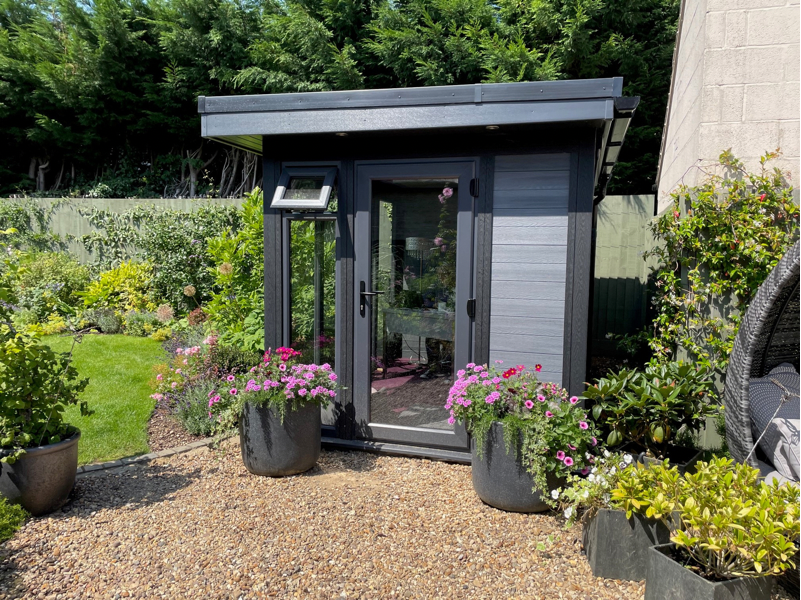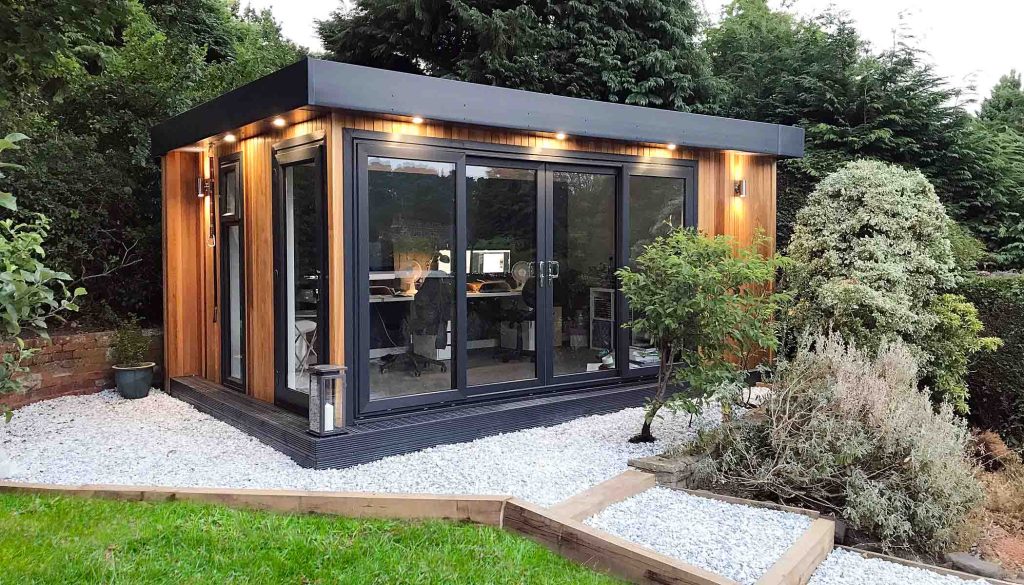Recommended Suggestions For Planning Permission On Garden Rooms
Recommended Suggestions For Planning Permission On Garden Rooms
Blog Article
What Size Restrictions Do You Have For Your The Size Of Your Garden And Other Areas.?
If you're considering the construction of conservatories or garden rooms, outhouses and garden offices, size restrictions can often determine if planning permission is required. Here are the size criteria that could require you to obtain planning permission.
Planning permission is normally required for detached outbuildings if its total area, including any outbuildings already built and the area around the house more than 50 percent.
Height Restrictions:
Single-story structures. The eaves' maximum height can't be more than 2.5 meters.
The height of buildings less than 2 metres away from the property's boundary should not be more than 2.5 metres in size.
Floor Area:
The building code could be required for structures that are larger than 30 square meters, even though planning permission isn’t required.
Proximity to boundaries:
Planning permission is usually required for structures that are within 2 metres of the property's boundary.
Building Usage
Although the size of gardens isn't the only factor, their intended use can determine if planning permission is required. For instance, if the structure is intended to be used for residences or commercial space the planning permission will be more likely to be needed.
Permitted Development Rights:
Permitted Development Rights permit development rights that allow certain types of works without the need for a full planning application and have size and condition restrictions. These rights are different depending on the type of property and whether it is in protected as a conservation area or subject to other restrictions.
Extensions and conservatories:
In general, for a single-story extension to the rear of a detached property the maximum depth is 4 meters and for semi-detached houses or terraced homes it's 3 meters. The Neighbour Consultation Scheme allows extensions of 8 or 6 metres, for example, if certain conditions are fulfilled.
The height of a single-story rear extension cannot exceed 4 meters.
Side Extensions:
The maximum height for an extension sideways shouldn't exceed 4 meters.
Volume Restrictions
In some areas, like conservation zones or Areas of Outstanding Natural Beauty Any addition to the original building that is greater than 10% or expands its volume by 50 cubic meter may need planning approval.
Front Extensions:
Planning permission is often required for extensions that extend past the front facing the road that was the initial home.
Contact your local authorities as rules can differ in accordance with local councils as well as conditions on the property. Even if you don't require planning permission A building regulation approval could still be needed to ensure structural integrity. Read the top do garden rooms add value for site tips including garden room vs extension, armoured cable for garden room, conservatories and garden rooms, outhouse buildings, garden room planning permission, myouthouse, garden room vs extension, costco outbuildings, garden room or extension, armoured cable for garden room and more.
What Planning Permissions Are You Required To Get To Build Garden Rooms, Etc. Regards To Height Restrictions?
The height of garden rooms and conservatories as well as outhouses, office buildings or extension will decide whether or not a permit for planning is needed. Here are the most important height-related considerations to keep in your mind:
If the roof is pitched in two pitches (such as on Gables) The maximum height for a detached extension or outbuilding should not be more than four meters.
If you have a flat roofing, a single-pitched roofing, or another type that has a maximum height, it cannot exceed 3 meters. The height maximum for any type of roof (flat or single-pitched) is 3 meters.
Limits of proximity:
The building's maximum height can't be more than 2.5 meters if it's within two meters of a property boundary. This is applicable to garages, sheds as well as similar structures.
Eaves Height:
The maximum eaves length (the distance that extends from the roof's lowest point up to the highest eaves height) of any building cannot exceed 2.5 metres.
Conservatories and Extensions:
To extend the rear of a house that is only one story in size, height cannot exceed four metres. This is inclusive of the parapet wall as well as the roof.
Side Extensions
Extensions that extend to the side of the home must be no taller than 4 meters, and should not be wider than half of the width originally.
Special Roofs:
Roofs that have a surface which is flat are limited to a max height of three meters.
Additional Restrictions on designated areas
In conservation zones designated as protected areas, Areas of Outstanding Natural Beauty and other designated areas, there might be higher height limits and planning permission is required for structures that would otherwise be allowed.
Constructions in National Parks
National Parks structures may also be subject to height restrictions which require planning permission.
Design of the Roof
The height of the highest point of roof (excluding chimneys and antennas) The roof's height must be considered. Planning permission is required when the height of the building exceeds the allowed development limits.
Neighbours are affected as well.
Planning permits are required, even if the building is not over the height limit. It may be required if there are significant impacts on privacy, light or views of neighbouring properties.
Maximum Overall Height
Any structure's height should not be more than 4 meters. For instance, an office in the garden with a double-pitched roof should not exceed 4 metres at its tallest point.
Decking or Platforms:
Platforms and decking connected to the structure can't elevate the level of the ground to more than 0.3 millimeters to avoid requiring approval for development.
Contact your local authority regarding the most recent changes and rules. Even if your project is within the development rights that are permitted in general, certain local variations and conditions may need permission for planning. Read the top main electric cable to house uk for more tips including best electric heater for cabin, garden room permitted development, small garden office, best heater for log cabin, outhouse builders, Tring garden rooms, garden outhouses, garden rooms in St Albans, what size garden room without planning permission, garden room planning permission and more.
What Planning Permission Is Required For Garden Rooms, Etc. With Regard To Utilities And Infrastructure
When you plan to construct gardens, conservatories, outhouses, garden offices or extensions, utilities and infrastructure considerations are crucial and can influence the need for permission to plan. Below are some important aspects to take into consideration water supply and drainage
A planning permit could be required for connecting a new structure with the water or drainage systems. Local water authorities might be required to evaluate any impact on the local water and sewage systems.
Gas and electricity connections:
If you are planning to connect a building to an electric or gas supply, you might need an approval for planning. The connection must comply with construction regulations and safety rules.
Utility Easements
Planning permission may be required if your proposed structure is in an area that is designated for utilities and infrastructure. Local utility providers may require approval for the construction within these zones.
Septic Tanks and Sewage Systems:
A permit for planning is required if a new structure requires a septic or an onsite sewage treatment system. These systems must meet environmental and health regulations.
Drainage of Surface Water Management
A planning permit could be required to tackle runoff from the surface and drainage issues from the new structure. It could be necessary to implement measures to avoid flooding, erosion and water pollution.
Access to Utilities for Construction
Planning permission may be required in the event that temporary utilities are needed (such as water for building). The temporary connections must be in compliance with safety and environmentally standards.
Impact on Local Infrastructure
It is essential to obtain planning permission in order to determine the impact that the new structure will have on the local infrastructure. This comprises utilities, roads as well as other public services. Local authorities will assess whether the existing infrastructure can help support the new development.
Waste Management and Recycling
Planning permission may include provisions for waste management during construction and recycling afterward. Recycling and waste disposal methods must be adequate to reduce the environmental impact.
Efficiency of Energy Efficiency:
It is possible to obtain planning permission before installing energy efficient systems or renewable energy sources (such solar panels and heat pumps) in your new home. It is important to comply with environmental and building standards.
Telecommunications and Internet Connectivity
Planning permission might be required for a new building that will require telecommunications or internet. In order to make sure that telecom infrastructure is in line with standards and regulations it is essential that the infrastructure adheres to these.
Accessible by Road and Footpath
It could be necessary to obtain planning approval to build or alter the access roads and footpaths for the new structure. Footpaths and roads must be in compliance with the safety standards of all construction sites.
Accessibility to Public Transport
If the structure is affecting access to public transportation facilities (such as trains or bus stops) Planning permission might be necessary. To ensure that public transport infrastructure complies with the standards and regulations, it is essential that the structure is in compliance with them.
The infrastructure and utilities are important factors that determine whether or not planning permission will be required for garden offices, conservatories and outhouses as well as garden rooms. In order to ensure that the regulations and standards are followed it is essential to speak with the local planning authority early in the stage in the planning process. View the recommended outhouse for sale for site tips including garden room vs extension, what size garden room without planning permission, garden rooms hertfordshire, small garden office, garden room heater, costco outhouse, costco garden room, small garden office, outhouses for garden, garden office and more.